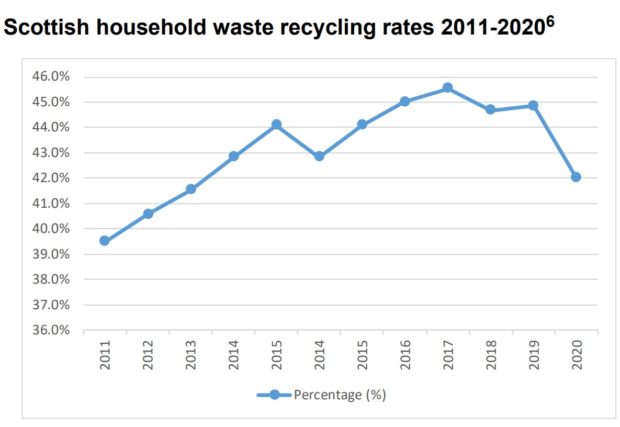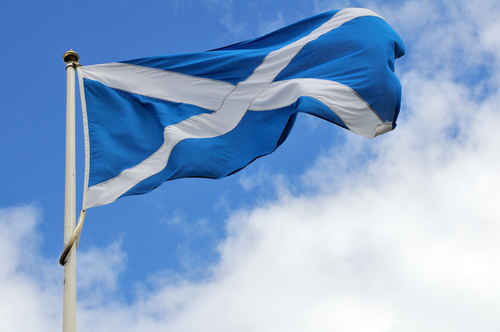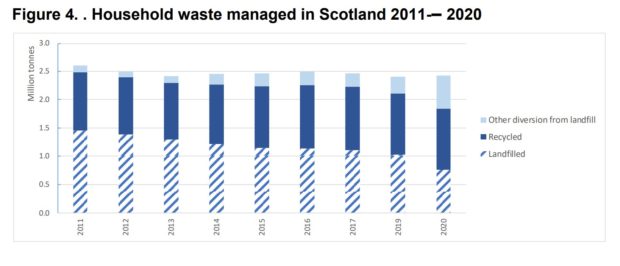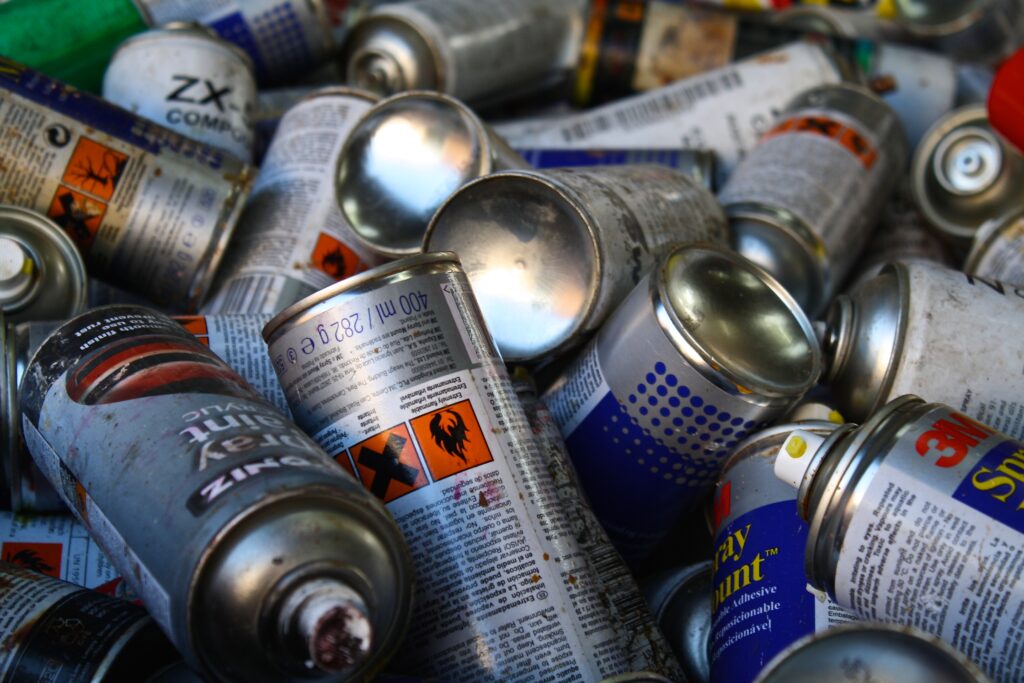SEPA said this was likely down to the Covid-19 pandemic.
In official statistics published today (7 December), SEPA said the drop was brought on by a 6% fall in the amount of recyclables collected, at 1.02 million tonnes.
This coincided with a 0.3% rise in waste volumes, to 2.4 million tonnes.
According to SEPA, the drop in recyclables collected was because of a 14.8% reduction in construction and soils, and a 5.7% drop in the composting of vegetal wastes.
SEPA explained: “This reduction may be due partly to a reduction in the amount of larger scale home improvement projects, resulting from COVID lockdown factors such as inability to source raw materials for home improvement projects”.
This outweighed the 14.4% and 8.3% respective rises in glass and plastics as people worked from home.
Angus was the council with the highest recycling rate at 59.1%, while the Shetland Islands recorded the lowest, with a rate of just 17.1%.

Covid-19
Iain Gulland, chief executive of Zero Waste Scotland, said: “There’s little doubt the disruption caused by the Covid-19 pandemic hit recycling efforts in 2020. In particular, the closure of recycling centres in many areas seems to have had the greatest impact.
“The good news is that the volume of materials collected for recycling at the kerbside increased, showing that there is a keen appetite to recycle more amongst householders.
“There was a huge collective effort from local authority staff in all departments, as well as private sector resource management companies, to keep the show on the road during the strictest lockdowns, and periods of heavy staff absence. This hard work was very much appreciated by the public.”
EfW
Amid an ongoing “review of incineration” in the country, which has seen a moratorium on new plants, today’s statistics showed that 1.26 million tonnes was sent for energy recovery.
This means more than 50% of Scotland’s waste is sent for energy recovery.
The 1.26 million tonnes sent for energy recovery represents a 3.1% rise from 2019, and an increase of 855,000 tonnes (208%) from 2011.
There was, however, a 15.3% reduction of wood waste incinerated, “a likely impact of Covid-19 restrictions such as closure of household waste recycling centres and reduced construction activities”.
Landfill
The total quantity of waste landfilled in Scotland in 2020 was 2.6 million tonnes, a reduction of 390,000 tonnes (13%) from 2019 and a reduction of 4.4 million tonnes (62.9%) from 2005. This is the ninth consecutive reduction in waste landfilled across Scotland. This decrease is primarily due to more waste being diverted from landfill to incineration.
Part of the reduction was largely due to less soils landfilled, which decreased by 340,000 tonnes (29%) from 2019. This is likely a result of reduced construction activity in Scotland due to Covid-19 restrictions during the reporting period.
Challenge
Terry A’Hearn, SEPA’s chief executive, said: “How we use resources in our homes, workplaces, public services and private sector can have a real impact on Scotland’s environment. Whilst it’s positive that for a ninth consecutive year we see a move from landfill, the latest data does reflect the realism of the public health emergency.
“What’s important is not the past, but what we do next. We’ve shown that by working together, we can rise to the challenge of a healthcare emergency. We need now to show that we can do this again in tackling the climate crisis.”
Carbon
One positive SEPA pointed to was on carbon reductions.
SEPA said the 2020 data “reflects a continued downward trajectory since 2011 in Scotland’s household waste carbon impact”.
SEPA said the carbon impact of Scottish household waste generated and managed in 2020 was 5.4 million tonnes of carbon dioxide equivalent (TCO2e), which is the equivalent to 1.00 TCO2e per person. This was a decrease of 225,000 TCO2e from 2019, and a reduction of 1.33 million TCO2e since 2011.
“This is largely due to increased recycling for high impact waste materials as well as reductions in waste generated and reduced landfilling of biodegradable waste,” SEPA explained.
Ireland/UK
Scotland’s announcement that its recycling rate has fallen comes soon after Ireland also announced last week that it’s recycling rate dropped to 39% in 2019, before the pandemic struck.
Wales announced last month that its recycling rate rose from 65.1% in 2019/20 to 65.4% in 2020/21. Northern Ireland’s recycling rate fell from 51.1% to 50% in 2020/21, while England’s latest is figure is 45.5% for 2019/20.













Subscribe for free